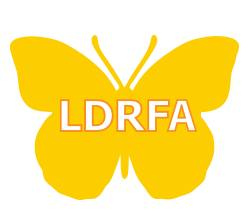
Assistive technology tools and devices can significantly enhance the learning experience for students with learning disabilities. Examples include text-to-speech software, speech recognition software, graphic organizers, and specialized keyboards. These tools can help students overcome specific challenges and promote independence in their learning.
Assistive technology improves the functional capabilities of students with disabilities. Functional abilities can include communication, learning, and mobility.
With the right assistive technology in place, these students can perform specific tasks that were earlier difficult to accomplish. They can accomplish such tasks with greater efficiency and success.
Assistive technology includes both devices and services. Devices include customized and commercially-available equipment used to maintain or enhance the existing capabilities of learners.
For teachers and schools, the use of assistive technology ensures that classrooms are well-equipped to deliver all-inclusive instruction. With assistive technology tools, schools can teach all types of learners efficiently.
For students, assistive technology makes learning and engagement easy. Being easy to use and effective, these devices improve the morale and confidence of students.
Devices can be as simple as highlighters, timers, and graphic organizers. They can also be high-tech such a computers and tablets, containing built-in specialized assistive software such as word prediction and text-to-speech software.
Services related to assistive technology include those that help learners to choose or use an assistive technology tool. Training and functional capacity evaluation may be conducted to assess the learner’s ability to use the device and evaluate the service’s success rate.
When incorporated into classrooms in the right way, assistive technology can bring a positive difference in students’ lives and enable them to succeed in the real world.
Here are some ways to incorporate assistive technology for learning disabilities in your classroom:
Incorporate Speech-to-Text Assistance
Speech-to-Text is an assistive software to support students with dyslexia. Dyslexic students find it difficult to learn languages as they cannot grasp the phonological aspects of a language. They find writing hard in particular as they become incapable of using language to express their thoughts.
As an assistive technology tool, speech-to-text software helps dyslexic students by enabling them to use their voices to respond. The voice commands are then converted into text format by the software.
Students can simply dictate the words into a computer to have the words appear as text on the screen.
For the best results, install the computer at a spot where background noises and classroom sounds are minimal. The computer can otherwise pick up such noises as input.
Students can use this software for completing their writing assignments and search the Internet for information.
Allow Printed Graphic Organizers for Writing Tasks
Graphic organizers are visual tools that enable students to organize their thoughts and ideas and connect them to available facts and terms during a learning activity.
Students with learning disorders such as EFD (Executive Function Disorder), and dysgraphia often find writing intimidating. Students with EFD struggle to process information, which makes learning difficult for them. Dysgraphia is a neurological disorder that makes it difficult for students to spell and write.
Printed graphic organizers help these students arrange their ideas practically, and understand the relationships therein, more effectively. The use of visual elements in graphic organizers makes such in-depth understanding easy.
With graphic organizers, students will find it easier to reproduce their ideas in writing.
Graphic organizers are of different types. They can be used depending on the information that needs to be processed. For example, a Thematic Map works well for general information.
A Problem and Solution Map is ideal for information that involves cause and effect. If the information has related sub-units, then a Network Tree is effective.
It’s estimated that one in every five students have dyslexia or another language-based learning difference.
Use Visual Timers to Ease Time-Based Anxieties in Students
For many students with special needs, especially those with EFD, time is an abstract concept. These students fail to understand time in its actual sense, and find moving from one task to another overwhelming and intimidating.
For example, they may not be able to understand the time limit set for a test. They can get anxious when they hear a time-elapse-nearing alarm.
A visual timer works best for such students. It can be placed on the desk or on a whiteboard where it is clearly visible. These timers clearly indicate the time that has elapsed and the time remaining for projects, tests or other classroom activities.
As students know the time available to them, they prepare better, which eases their anxiety and keeps them calm. Such students can benefit from additional time for test-taking. A test environment that is free of distractions is also quite helpful.
There are physical timers as well as timer apps. You can use either depending on the ease of usability in your classroom.
Provide Seat Cushions to Improve Focus
Students with hyperactive behavior and those with autism and ADHD struggle to be seated at a single place. This affects their focus and their ability to learn.
Assistive seat cushions are well-known assistive technology tools for ADHD, autism and other disorders that have a deep impact on the students’ learning capability.
They help calm such children by providing them greater mobility. Students can bounce on these chairs and move around while on the chair. These cushions are designed to improve posture. So, any negative impact on the back resulting from prolonged sitting is minimized.
Seat cushions have been known to build focus, improve behavior, and increase classroom engagement.
Include Virtual Reality (VR) for a Real-World Experience
Virtual Reality is an Assistive Technology devices that brings real-world realities into the classroom.
Academy of Whole Learning, a Minnesota-based K-12 private school for children with autism spectrum, shows the way for effective implementation of this tool. Autism affects learning by narrowing down focus, impacting attention, and stunting language development skills.
Academy introduced VR in its classrooms, which led to increased engagement and better social interactions among students.
The school used VR to take children on a world tour, introducing them to the various wonders around the world, from the classroom. The immersive VR experience had students engaged, blocking any distractions they would otherwise have in the classroom. VR made the students feel as if they were witnessing the attractions of the world in reality.
Students were also able to connect with each other better through virtual interactions.
Accommodations & Modifications
Accommodations and modifications are adjustments made to the learning environment or curriculum to meet the unique needs of students with learning disabilities. Accommodations may include extended time on tests, preferential seating, or access to note-taking assistance. Modifications involve altering the curriculum content or requirements to match the student’s abilities while still addressing essential learning goals.
How Schools Can Meet the Needs of Students with Learning Disabilities In Schools
Teachers should employ a variety of teaching strategies and instructional materials to accommodate different learning styles and abilities. Differentiated instruction involves modifying the content, process, and product of lessons to ensure that all students, including those with learning disabilities, can access and engage with the curriculum.
Conclusion
Parents of special children want to see their child succeed at school and develop skills to achieve a quality of life. The use of assistive technology tools in classrooms makes their dream come true. Parents should also know about Assistive Technology Laws and Legislation to help their special education kids’ need.
By implementing these strategies, schools can create an inclusive and supportive environment that meets the needs of students with learning disabilities, allowing them to thrive academically and socially.
If you are struggling with Dyslexia of Learning disabilities, LDRFA is offering an AWARD PROGRAM for ASSISTIVE TECHNOLOGY. and resources.

